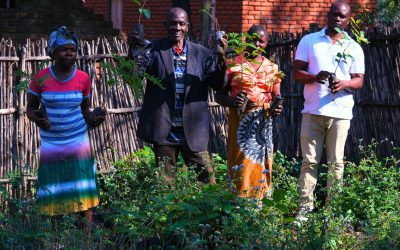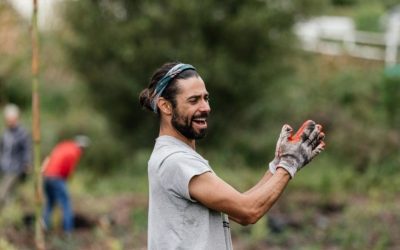5 Benefits of Planting Fynbos
23
SEPTEMBER, 2022
By Marlena Niedl
Out of all six floral kingdoms, the Cape Floral Region is the smallest one and still it showcases the highest level of endemism and biodiversity. The term fynbos comprises over 9,600 species, most of which are only found in this area. But, what else makes fynbos so special? We’ve rounded up 5 top benefits of fynbos that are sure to increase your appreciation for this wonder of nature.
1. They help in diversifying an ecosystem
The fynbos biome is one of the most diverse floral ecosystems in the world. In fact, even more so than some tropical rainforests! Due to urban sprawl (“the rapid expansion of the geographic extent of cities and towns”), climate change and invasive alien plants, many fynbos species are already endangered or extinct in the wild. Locally indigenous plants are more resistant to diseases which is why, compared to many types of exotic plants, they do not require pesticides. Especially in the mountains, alien vegetation, together with fires that burn too frequently, constitute the biggest threats to fynbos plants and is a major cause for the decline in diversity. To keep the Cape Floral Region diverse, it is crucial to eliminate alien vegetation and replace them with locally indigenous species.
When gardening, consider locally indigenous fynbos species to help the environment and keep the Cape Floral Region biologically diverse. By educating future generations about biodiversity and planting fynbos gardens in the Cape Region, everyone can contribute to keeping this extraordinary hotspot alive.
“Most of the Cape Floral Kingdom is contained within one province, the Western Cape. There are about 9,500 species, so gardeners living within the area are absolutely spoiled for choice!”
– Deon Louw, Greenpop Urban Greening Manager
2. They attract a range of pollinators
Fynbos species do not only benefit the flora but also the fauna in South Africa. They attract a wide range of indigenous pollinators, and facilitate their survival. Fynbos are not only pollinated by bees and other insects, but also birds and even rodents. Birds with long beaks like the Cape Sugarbird will visit over a hundred plants a day, which is a huge aid in the pollination of fynbos.
But, sadly, increased urban sprawl, habitat destruction, and pollution make it harder for these busy little helpers to fly their usual routes. That is why the initiative, Fynbos Corridor Collaboration, aims at registering and strategically placing fynbos gardens all around Cape Town. Have you planted a fynbos garden at your home or know of a garden near you? Go ahead and register it to support establishing Fynbos Corridors!
“The seeds of Leucospermums (Pincushions) are actually dispersed by ants! They are attracted to the external part of the seed with nutrients and carry the seeds back to their underground nests where they eat the membrane but leave the seed unharmed where it stays until it’s ready to germinate.”
– Mark Stout, Greenpop Urban Greening Intern
3. They require very little maintenance
Another advantage of most fynbos species is that they are very low maintenance. Loving them to death is the most hazardous! These beautiful plants require very little care and are adapted to the rough winter conditions of the Western Cape and parts of the Eastern Cape. Therefore, they are known for growing in dry and parched terrain. Nevertheless, they need a good amount of sun to thrive! In fact, they even tolerate extreme temperatures and fire. Fire facilitates fynbos’ seed germination and regeneration, which is why it is vital for the plants to burn periodically (every 10-25 years).
“Fire keeps fynbos alive by returning valuable nutrients to the soil while also clearing old vegetation to make space for new growth, but it cannot happen too often because they need time in between to produce seed.”
– Mark Stout, Greenpop Urban Greening Intern
4. They can be used as medicine
Did you know that fynbos plants even have medicinal benefits? Rooibos tea is well known for its taste and natural benefits but it is not the only indigenous fynbos that is good for the body. In traditional medicine fynbos are often used to alleviate symptoms such as fever or cramps. For instance, Buchu leaves can make for a nice tea to help with stomach issues, bloating and infections. In fact, the Khoisan named Buchu the ‘Elixir of Youth’. After a stressful day, a calming Geranium tea might be a nice idea. What’s even more, the fynbos biome has been found to help with speeding up the process of cell regeneration, which is why fynbos plants’ oil can be used for skincare.
“Helichrysum ‘Impepho’ is used as a traditional medicine for anxiety, respiratory problems and as a pain reliever by just cutting the leaves and branches of the plant and leaving them to dry for a while. These can later be boiled or steamed and inhaled. Artemisia afra, the African wormwood ‘ Umhlonyane’, is used as a traditional treatment for asthma, hay fever and for coughs and colds.”
– Bongile Galo, Greepop Urban Greening Assistant.
5. They make a big difference to the biome’s overall survival
As mentioned earlier, the Cape Floral Region is one of the most biodiverse in the world. In fact, it is recognized as a World Heritage Site by UNESCO. With a couple thousand species that cannot be found anywhere else in the world, the different fynbos species are vital for the biome’s survival. Compared to other floral kingdoms, the Cape Floral Region holds lots of endemic plants that are compressed into an extremely small geographical area, which fynbos plants even more uniquely South African than elephants, leopards or rhinos. Fynbos are also vital beyond the borders of South Africa, and are valuable for the African continent as a whole. This is due to the fact that fynbos actually makes up 20% of Africa’s flora. The fynbos biome is also very sensitive to threats like global warming. No wonder the Cape Floral Kingdom should be treated with intense care!
Find out more about how you can contribute to Fynbos survival and learn about the Fynbos corridors in Cape Town: www.fynboscorridors.org
The Intersection Between Human and Ecological Health: The Mulanje Landscape Restoration Project
Read more about Greenpop’s partnership with Mulanje Mission Hospital and the environmental restoration work they’re doing in Mulanje, Malawi.
Lessons in Sustainable Eventing From Greenpop’s Reforest Fest
Discover how Reforest Fest is redefining sustainable eventing in South Africa, from zero-waste practices, local sourcing and tree planting.
Arbor Month 2024: A Letter From Our Director, Misha Teasdale
The key to successful tree planting is understanding the local environment and recognising a tree’s potential for greater ecosystem health.
Greenpop Foundation NPC is a registered non-profit organisation. Registration Number (NPO): 151-411 NPO.



